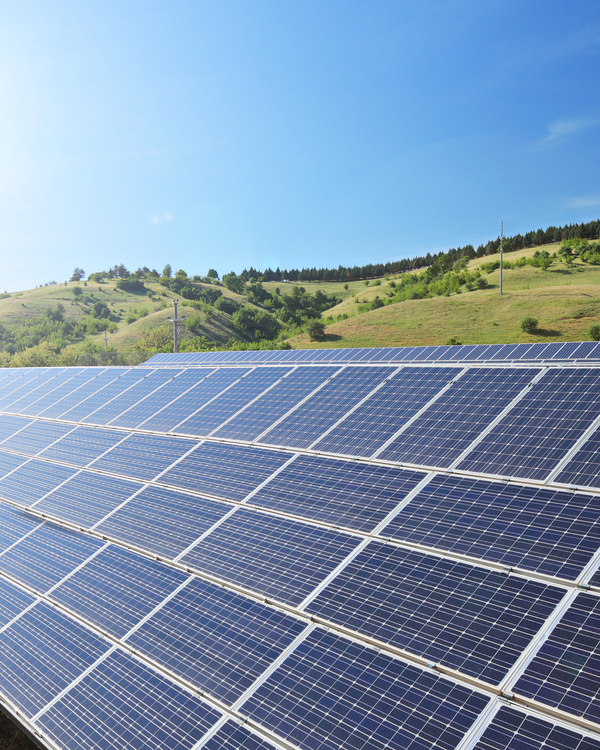Paris climate agreement – can we achieve it?
If the 1.5-degree climate target set out in the Paris Agreement is to be achieved, the global economy must not emit more than 465 gigatonnes of greenhouse gases between 2019 and 2050. However, by the end of 2023, more than half of this budget had already been used up. This makes it all the more important to implement effective reduction measures – and the necessary investments.

When the 1.5-degree climate target for the year 2050 is mentioned, the background and the direct link to global greenhouse gas emissions are often little known. The target is based on the forecast of the United Nations' Intergovernmental Panel on Climate Change, according to which there is a 50 per cent probability that the average global temperature will rise by a maximum of 1.5 degrees Celsius if greenhouse gas emissions (measured in CO2 equivalents, CO2e) are limited to a total of less than 465 gigatonnes of CO2e from 2019 to 2050.
What initially looks like a figure that will hardly ever be reached is in fact approaching much faster than humanity would like. In fact, it is already well on its way to failing at the targeted mark. In order to meet the above-mentioned budget, great efforts are needed – and also major investments in sustainability.
A look at the development of CO2e emissions since the adoption of the Paris Agreement in 2015 shows that they have increased continuously since then. The only exception was the year 2020 in connection with the COVID lockdown. Otherwise, one record was followed by another. Last year, emissions reached a new record of 52.9 gigatonnes of CO2e in 2023. This means that the international community has already used up more than half of the total emissions budgeted for the period up to 2050, or 259 gigatonnes of CO2e. If the target is still to be achieved, only 44 per cent of the predicted total emissions are likely to be incurred over the next 25 years.
Even if we lower the bar and assume that there is only a 66 per cent probability that the temperature increase will be limited to well below 2 degrees Celsius, the IPCC report indicates that the maximum greenhouse gas budget available to humanity is 1,090 gigatonnes. We have already used up a good quarter of that. The main drivers behind the steady increase in CO2e emissions are the continuous population growth and the simultaneous increase in prosperity. These long-term trends trigger an additional production demand, which coincides with a constant CO2e budget.
CO2e emissions: well over budget (Emissions in gigatonnes)

Short-term investment costs for long-term benefits
On the other hand, a broad mix of measures is needed to reduce CO2e emissions. These include more sustainable consumption, energy-saving measures, cleaner energy production and the protection and preservation of natural CO2e reservoirs. These measures are being driven by the implementation of energy-efficient technologies in industry, transport and buildings. At the same time, renewable energies need to be promoted and ecosystems such as forests and oceans need to be protected and restored. The latter are natural carbon sinks. Furthermore, the development and implementation of decarbonisation techniques, such as carbon dioxide capture and storage (CCUS), plays a role in the development of additional carbon dioxide sinks.
The transition to alternative energy sources and low-emission technologies requires enormous investments in research and development as well as in infrastructure. The International Energy Agency (IEA) estimates that to achieve the 1.5-degree target, $4.5 trillion will need to be invested in renewable energies annually from 2024 onwards. This is more than double the approximately 1.8 trillion US dollars spent on it in 2023. By contrast, according to the International Monetary Fund, subsidies for fossil fuels totalled 7 trillion US dollars (7.1% of global GDP) in 2022.
Although short-term investment costs are offset by long-term benefits, this fact is not always easy to communicate politically. Furthermore, international cooperation is complex and lengthy. No country wants to incur international disadvantages as a result of commitments.
Achieving the 1.5-degree target of the Paris Agreement thus remains an enormous challenge. However, the target is still within reach. But to get there, drastic measures are needed. An unprecedented coordination of cooperation and efforts at the individual, corporate, state and international level is required.
Opportunities for investors – but also transition risks
The obligations of states under the Paris Agreement have a significant impact on the investment landscape. On the one hand, they create opportunities for investors to invest in companies that focus on renewable energies, energy efficiency and low-carbon technologies. On the other hand, they also entail transition risks. These primarily include stranded assets. These are assets that lose value prematurely or are no longer profitable due to technological, economic, regulatory or ecological changes. In the discussion about climate change and the transition to a low-carbon economy, the coal, oil and gas industries, for example, are increasingly coming under pressure. For example, despite subsidies, the S&P 500 Energy has yielded 9.53% less annually over the last ten years than the S&P 500 ex Energy (total return as of 2 October 2024).
Zürcher Kantonalbank's asset management has two tools at its disposal for taking climate-related aspects into account in a portfolio: investment stewardship and capital allocation. Through dialogue with company management and by exercising voting rights, companies can be encouraged to formulate and implement effective CO2e reduction targets. On the other hand, investments in companies and countries with high greenhouse gas emissions that do not have their own reduction plans can be underweighted in the portfolios or replaced by investments in CO2e-efficient companies and countries with ambitious reduction targets.
In order to manage customer assets in an optimal way with regard to the risk-return profile, the opportunities and risks arising from climate change play an important role in the investment decisions made by Zürcher Kantonalbank's asset management team.


